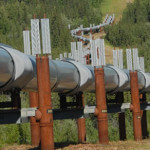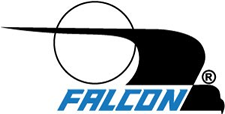This post was updated on Feb 21, 2023. Click this link for the updated post.
A commercial-grade on-line UPS having a UL or ETL Listing for operation over a 0°C to 40°C temperature range typically has been submitted by the manufacturer to a safety agency for an engineering evaluation. As part of the evaluation, a temperature profile is taken of the highest heat generating components and heatsinks to assure they do not exceed their maximum temperature ratings, while the UPS is operated at the maximum temperature specified by the manufacturer. A UPS incorporates many high power components that can overheat and not only cause the UPS to fail, but present a risk of an internal UPS fire.
The safety agency also reviews the types of circuit board and plastic materials used in construction of the UPS with regards to their temperature ratings and limits. Due to the largest part of the UPS market demand being for products rated for use in temperature controlled environments, most on-line UPS manufacturers design their products for operation in the standard 0°C to 40°C operating environment and submit them to the safety agency for evaluation over the same operational temperature range.
Installing this UPS in a building or NEMA enclosure without proper temperature control in the summer in Arizona would be using the UPS outside safety agency’s product listing status. In many cases, since the UPS was designed for use in a limited temperature environment, internal components that were near their temperature limits when tested could exceed their maximum temperature ratings. This will result in the UPS having a greatly reduced reliability and service life, or an outright failure.
At the higher temperatures of Arizona, plastics used in the UPS construction and battery can become deformed or cracked. The standard UPS battery used is typically not rated for temperatures above 40°C to 50°C. Further, per the battery manufacturer’s rated 50°C temperatures, the battery service life can be severely reduced from five years to a few months.
To meet the demand for industrial and high temperature UPS, a few manufacturers are designing products specifically to not only survive in these difficult environments, but to provide superior performance, while greatly reducing the servicing requirements. The wider-temperature range products may be found in standalone UPS units or prepackaged turnkey systems from the manufacturer that are packaged into NEMA rated enclosures and cabinets. These systems are ready for immediate installation and operation and reduce the associated project engineering costs.
Typical Application
The pipeline starts at the well head and is an ideal example of how rugged, wide-temperature power protection equipment is installed and used. New drilling and well reprocessing techniques such as fracking have the potential to revitalize many of the played out oil and gas wells in this country. The process involves drilling down an existing well and at a specified depth turning the drill ninety degrees and drilling across the oil deposit. Fluid is pumped down in to the well at very high pressures, about one thousand pounds per square inch. Since the fluid in the well is under such high pressure, should the utility power be lost to the pump it is imperative that the a valve be closed at the wellhead to prevent the fluid from coming back out of the well and causing a very expensive hazardous materials clean up. To eliminate this problem, an industrial Uninterruptible Power Supply (UPS) is installed into a NEMA 3R rated enclosure on site. As the enclosure is located outside, the UPS is subjected to the wide range of temperatures experienced at the specific location. The UPS is used to provide backup power to both the onsite SCADA client system in addition to providing the power to close the wellhead valve.
reprocessing techniques such as fracking have the potential to revitalize many of the played out oil and gas wells in this country. The process involves drilling down an existing well and at a specified depth turning the drill ninety degrees and drilling across the oil deposit. Fluid is pumped down in to the well at very high pressures, about one thousand pounds per square inch. Since the fluid in the well is under such high pressure, should the utility power be lost to the pump it is imperative that the a valve be closed at the wellhead to prevent the fluid from coming back out of the well and causing a very expensive hazardous materials clean up. To eliminate this problem, an industrial Uninterruptible Power Supply (UPS) is installed into a NEMA 3R rated enclosure on site. As the enclosure is located outside, the UPS is subjected to the wide range of temperatures experienced at the specific location. The UPS is used to provide backup power to both the onsite SCADA client system in addition to providing the power to close the wellhead valve.
In conclusion, the on-line industrial UPS, rated for proper operational temperature ranges provides the ideal solution to utility power related problems. It can be used as an active surge protector, battery backup, precision voltage and frequency regulator and if programmable, much more.
